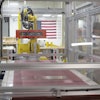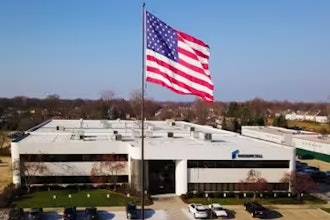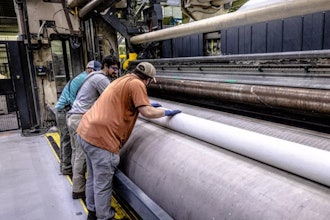An overhaul to the nation’s chemical safety laws sailed through Congress last year with strong bipartisan support.
Passing the law is just the beginning, however. Now the pressure is on the Environmental Protection Agency to actually implement the new measures, known as The Frank R. Lautenberg Chemical Safety for the 21st Century Act.
Earlier this month at Informex, an event hosted by UBM, I sat down with Brendan Collins, a partner at Ballard Spahr, to chat about a question looming over the industry: Will the EPA be able to keep up with the law’s many deadlines over the next few years?
So far, the EPA has delivered on the first part of a rule requiring that the agency step up its safety reviews for controversial chemicals. In November, the agency announced the first 10 chemicals it will begin assessing. Ultimately these evaluations could lead to stricter rules for handling and manufacturing the chemicals.
Meanwhile, other aspects of the law are set to roll over during the next few years. But a few roadblocks could slow that all down.
The Will Of The Trump Administration
Since taking office, President Donald Trump has delivered on his promise to slash regulations. In January, he signed an executive order requiring federal agencies to cut two existing regulations for every new rule they want to implement.
Lautenberg is chock full of new rules. Will this mean that the EPA has to cut existing regulations? Will the process designed by the executive order slow down the EPA’s ability to enact regulations in Lautenberg? According to Collins, it’s still too early to know for sure.
Then again, Lautenberg was passed with overwhelming support from Democrats and Republicans, as well as the industry and many environmental groups. This widespread approval might help Lautenberg’s stipulations move smoothly through the rulemaking process. Collins says that the language of Trump’s executive order is also vague enough that the EPA might be able to show that rules under Lautenberg don’t apply in this case.
“In Trump’s own words…the executive order is written [to say that] the intent is not to interfere with legal obligations,” Collins explains.
A Shortage Of EPA Staff
Even before the administration change, there were concerns that the EPA would not be able to implement the mountain of new regulations under Lautenberg. Now, it’s looking even bleaker.
As of this week, Trump has only nominated one person to fill the 14 Senate-confirmed slots at the EPA: the administrator, Scott Pruitt. With every new nominee facing tough opposition from Democrats, this process isn’t likely to go quickly.
“In the short-term, the EPA is powerless to do what the industry wants it to do, because there are not confirmed people in place to do [the work],” Collins says. “And because of the Congressional recess, it’s likely to be 2018 before there is a full sweep of senior EPA appointees confirmed.”
The Resource Battle
Trump’s proposed budget calls for dramatic reductions at the EPA. If passed, it could cut 25 percent of funding and 20 percent of staff at the agency. This will leave industry stakeholders clamoring for the agency’s shrinking resources.
Collins suggests that manufacturers stay involved in the public comment period for rules as they come up, so that they can make sure the process is something both manufacturers and the EPA will be able to handle. Otherwise, if the EPA is working under a resource-strained environment, it may not be willing to change course with certain processes once they are in place.
“If, for example, a manufacturer finds that a chemical safety evaluation is not set up in the right way — the defined uses are too broad or they are not considering the right uses — the agency is not going to be as receptive to changing direction [on the rule],” Collins says.
Getting involved in the process too late could mean that manufacturers don’t end up with a say at all.
“It could be like standing in a bread line — just because you wait for hours, doesn’t mean there’s bread at the front,” Collins says.






















